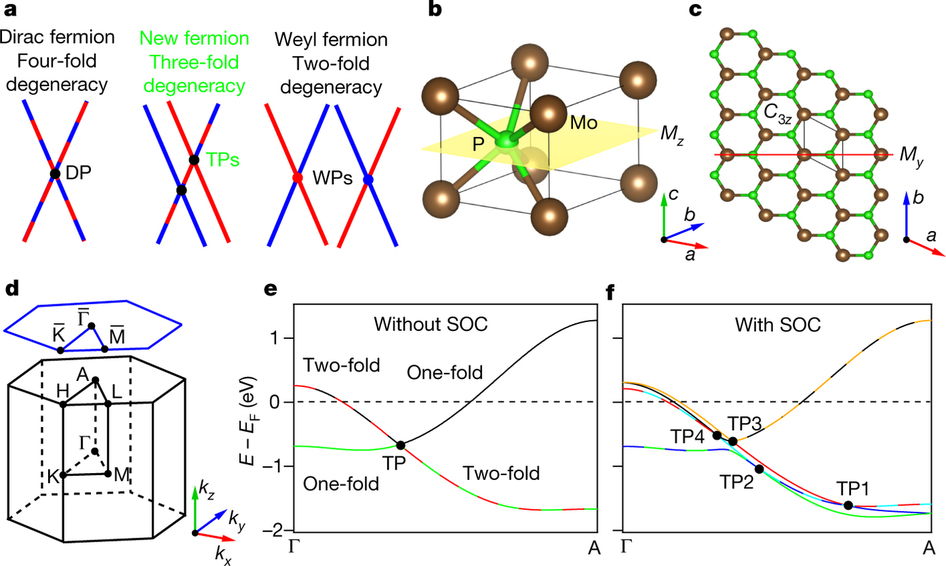Home > Science and Publications > Science Highlights
Observation of Three-component Fermions in the Topological Semimetal Molybdenum Phosphide
In quantum field theory, Lorentz invariance leads to three types of fermion—Dirac, Weyl and Majorana. Although the existence of Weyl and Majorana fermions as elementary particles in high-energy physics is debated, all three types of fermion have been proposed to exist as low-energy, long-wavelength quasiparticle excitations in condensed-matter systems. The existence of Dirac and Weyl fermions in condensed-matter systems has been confirmed experimentally and that of Majorana fermions is supported by various experiments. However, in condensed-matter systems, fermions in crystals are constrained by the symmetries of the 230 crystal space groups rather than by Lorentz invariance, giving rise to the possibility of finding other types of fermionic excitation that have no counterparts in high-energy physics. Here we use angle-resolved photoemission spectroscopy to demonstrate the existence of a triply degenerate point in the electronic structure of crystalline molybdenum phosphide. Quasiparticle excitations near a triply degenerate point are three-component fermions, beyond the conventional Dirac–Weyl–Majorana classification, which attributes Dirac and Weyl fermions to four- and two-fold degenerate points, respectively. We also observe pairs of Weyl points in the bulk electronic structure of the crystal that coexist with the three-component fermions. This material thus represents a platform for studying the interplay between different types of fermions. Our experimental discovery opens up a way of exploring the new physics of unconventional fermions in condensed-matter systems. Soft X-ray ARPES measurements were performed at the ‘Dreamline’ beamline of the Shanghai Synchrotron Radiation Facility (SSRF).

Links: doi:10.1038/nature22390


 Copyright©2006.12 Shanghai Advanced Research Institute.
Copyright©2006.12 Shanghai Advanced Research Institute.